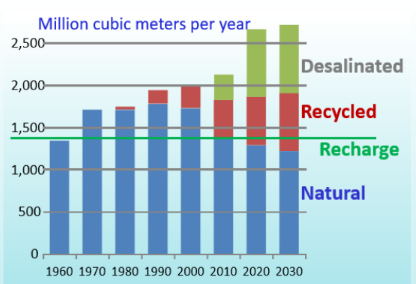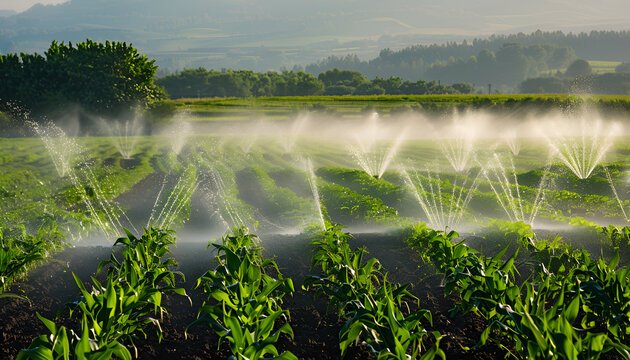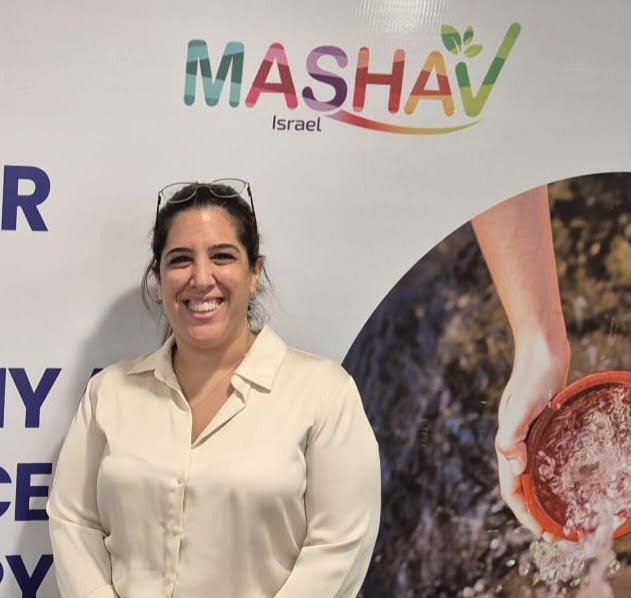Israel’s water journey offers a powerful playbook for nations grappling with depleting aquifers. In an exclusive conversation with AgroSpectrum, Noa Amsalem, Water Attach’e, Embassy of Israel in India describes how Israel moved from groundwater dependence to “manufactured water” through large-scale desalination and recycling over 90 per cent of its municipal wastewater. She cautions that while groundwater may resemble oil in its scarcity, its true value is closer to gold — finite, irreplaceable, and too precious to be used only once. For India, Noa stresses that regulation must go hand in hand with alternatives: treated wastewater, drip irrigation, and locally adapted solutions like managed aquifer recharge. She highlights India–Israel Centers of Excellence as living labs for co-developing technologies ranging from fit-for-purpose reuse to digital monitoring of soil and water. Looking ahead, Noa bets on artificial intelligence as the backbone of groundwater governance, provided it is coupled with farmer training and inclusive adoption.
Setting the Stage – The Global Groundwater Reckoning
Groundwater has become the hidden engine of global agriculture, yet FAO estimates that nearly 20 per cent of aquifers are already overexploited. From Israel’s lens, do you see groundwater as today’s oil — a finite resource heading toward geo-political contestation?
Unlike oil, water is not traded on global markets but tied to specific locations, which makes its overuse both a local hydrological crisis and a political challenge. Moreover, unlike oil, water has no substitute for sustaining life. From Israel’s perspective, groundwater is a finite resource, and excessive pumping leads to salinization, land subsidence, and long-term fragility of water systems.
In this sense, the analogy of “groundwater as the new oil” is only partially correct: scarcity will influence geopolitics, but the way forward is not through conflict, but through creating alternatives – desalination of brackish and seawater, wastewater reuse for agriculture, and active demand management. These are “manufactured water” sources, produced through human investment and innovation, which reduce dependence on natural aquifers and seasonal rainfall.
Israel’s key achievement has been precisely this shift: moving from reliance on natural water sources (groundwater and surface water) to manufactured water (desalinated seawater and treated wastewater). Strategic decisions in the early 2000s – building large-scale desalination plants and mandating wastewater reuse in agriculture – fundamentally transformed the water system. Today, aquifers are still monitored and protected, but they are no longer the sole backbone of national water security.
From this perspective, a dual analogy can be made: like oil, groundwater is a limited resource whose value rises as its reserves shrink. Even more, it is like gold – a finite resource whose price is determined by its scarcity, and whose value for agriculture and sustaining life will only continue to grow. The difference is that water is too precious to be used only once.
This lesson is relevant globally: sustainability does not come solely from regulation or restricting natural resources, but from investing in alternative sources that reduce the centrality of natural groundwater and mitigate potential conflicts.
Israel’s Playbook – What Works, What Doesn’t
Israel turned a desert into an agricultural exporter while reducing dependence on aquifers. Which single policy intervention — pricing, metering, or wastewater reuse — had the most transformative impact, and why?
Also, Israel enforces mandatory water accounting and volumetric pricing. In countries like India, free electricity fuels rampant groundwater pumping. Is there a middle path between political feasibility and hydrological sustainability?
Most transformative intervention: Wastewater reuse. Today Israel recycles more than 90% of its municipal wastewater – the highest rate worldwide (OECD, 2023). This has allowed agriculture to rely significantly less on groundwater, stabilized supplies, and freed natural freshwater for urban and industrial use. Pricing and metering were important, but wastewater reuse was the real game-changer.

In the graph, the green line represents the recharge by rainfall, which would have allowed the population to reach a certain size—much smaller than today. The change is already visible two decades ago, with a significant increase in water availability thanks to wastewater reuse and desalination plants.
Balancing sustainability and politics: Over-subsidies (such as free electricity or water) can lead to over-pumping. Israel’s experience suggests a middle path: gradually introducing volumetric pricing while providing clear alternatives – treated wastewater, local desalination, or efficient drip irrigation systems.
“Gradually” means starting with low prices and increasing step by step so that farmers and the public adapt without shocks. In Israel, this model is also applied to households: a basic “lifeline” amount of water is cheap, and consumption above that is charged at higher rates.
Importance of alternatives: Critical. Regulation without alternatives leads to resistance and non-compliance. In Israel, desalination and wastewater reuse gave regulators credibility – limits were enforced, but real solutions were also available. This “regulation plus alternatives” model can be applied elsewhere, provided it is adapted locally (for example, managed aquifer recharge in India).
The Indian context – industrial reuse as a funding engine: A notable example comes from Chennai, where large-scale industrial reuse of water has become a major source of revenue. These funds are reinvested in upgrading water supply infrastructure, improving service for households and farmers alike. This demonstrates that industrial reuse of treated water can play a central role in financing more sustainable water systems.
Technology & Innovation – The Next Frontier
Drip irrigation is now globally associated with Israel. Beyond drip, what are the next big technologies — AI-driven aquifer mapping, precision fertigation, soil microbiome engineering — that could redefine groundwater use?
Beyond drip irrigation, the next frontier in agriculture lies in rethinking the very sources of water that sustain it. Desalination of brackish water has already proven to be a viable solution, providing farmers in arid regions with a reliable supply. However, the most significant transformation will come from advancing the use of treated wastewater in agriculture.
The future is not just about recycling water but about fit-for-purpose reuse – tailoring water quality to specific crops or agricultural applications. Leafy vegetables consumed raw may require higher-quality water than wheat or cotton. This allows smarter allocation of resources, lowers treatment costs, and reduces energy consumption.
Integrating treated wastewater with digital technologies and real-time monitoring further enhances safety and efficiency. Sensors tracking salinity, nutrient levels, and contaminants can dynamically adjust irrigation practices, supporting both food safety and soil health.
Another key opportunity lies in hybrid systems, where treated wastewater is combined with desalinated brackish water. Such combinations help balance salinity, reduce soil degradation risks, and create sustainable long-term agricultural practices.
Finally, treated wastewater should no longer be seen as a “secondary” solution but as a cornerstone of circular agriculture. Beyond irrigation, wastewater streams provide nutrients like nitrogen and phosphorus for fertilizers, and even energy from sludge – turning a waste challenge into a value-generating cycle.
Looking ahead, innovation is not just about new water treatment technologies, but about the integrated cycles of water, energy, and nutrients, where treated wastewater becomes a central driver of sustainable agriculture in the decades to come.
Global Cooperation and Looking Ahead
How do you see the India–Israel partnership evolving in groundwater — joint pilots, technology incubation hubs, or institutional knowledge-sharing?
Water alliances are emerging as a natural response to shared challenges and can strengthen regional resilience. Future cooperation is expected to focus less on maximizing supply and more on security, sustainable management, and regional stability.
A concrete example is the network of Centers of Excellence established in India with support from Israel’s MASHAV – Israel’s Agency for International Development Cooperation. These centers operate in areas such as precision irrigation, post-harvest management, and water-use efficiency, serving as hubs for training, demonstration, and joint R&D. Indian and Israeli experts learn from each other, testing solutions on the ground before scaling up. The key lesson is clear: Israel can inspire and accelerate innovation, but solutions must be adapted to local conditions – they cannot simply be “copied and pasted.”
If you had to bet on one radical solution — AI, bio-innovations, carbon markets for water efficiency, or desalination-for-agriculture — which will define the groundwater economy of 2050?
Artificial Intelligence is expected to become the backbone of water management – from large-scale aquifer mapping to precise fertigation in individual fields. Yet in the Indian context, the human factor is critical: millions of farmers and water professionals need training and empowerment to work with these digital systems. The future is therefore not only AI as the “operating system” of water management, but the combination of advanced technology with India’s vast human capital, creating resilient, inclusive, and sustainable water governance.
— Suchetana Choudhury (suchetana.choudhuri@agrospectrumindia.com)


